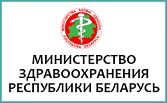Lungs' cancer
Lung cancer begins when abnormal cells begin to grow in the lung tissue. Lung cancer and smoking often, but not always, go hand in hand.
He usually has no signs or early symptoms, and those that are - like a smoker's cough or pneumonia, and can include coughing, wheezing, shortness of breath and in advanced stages - bloody mucus.
Causes
Causes of lung cancer are smoking - both active and passive, inflammatory chronic lung diseases, as well as the influence of carcinogens.
• With regard to smoking statistics gives a clear answer - the longer the experience of the smoker and the worse the quality of cigarettes, the higher the risk of developing lung cancer.
• Chronic diseases increase the likelihood of developing lung cancer, the most dangerous are tuberculosis, bronchiectasis, COPD and pneumosclerosis.
• Work or prolonged exposure to carcinogens increases the risk of developing lung cancer; these are: arsenic, chromium, nickel and asbestos-related industries (especially asbestos dust), heavy metals and chloromethyl ether.
Symptoms
The fourth part of all people with lung cancer have no symptoms at the time of diagnosis of lung cancer. These tumors are usually determined by chest X-ray, which is carried out for another reason. The remaining three quarters of the population turn to the doctor if they have anxious signs: prolonged cough, hemoptysis or rusty sputum, increased fatigue, unexplained weight loss, chronic respiratory infections, hoarseness, snoring and shortness of breath, chest pains - dull, aching, Prolonged, shortness of breath.
It is important to note that these symptoms may indicate the development of several respiratory diseases and, if there are two or more worrisome symptoms, contact your doctor for the necessary diagnosis (see below)
Diagnostics
Lung cancer is divided into two main types - small cell and non-small cell. This classification is based on the microscopic structure of tumor cells. Their difference is expressed not only in the structure of cells, but also in the symptomatology and spread of cancer.
Small cell lung cancer is the most aggressive and fast-growing form of lung cancer, inextricably linked with smoking - about 99% of detected small-cell cancers in smokers. In addition to rapid growth and metastasis, it has an unfavorable prognosis, as it is found most often at an advanced stage and is difficult to treat.
Non-small cell lung cancer is the most common lung cancer, accounting for about 80% of all cases, it has three main types, which are called cell-based types in the tumor. These include: adenocarcinomas, squamous cell carcinoma, undifferentiated lung cancer.
• Types of lung cancer - more ...
Types of lung cancer diagnosis:
• Chest X-ray is shown as the first examination in the presence of anxiety symptoms
• CT of the chest can be ordered for a more detailed examination.
• Mucus analysis - sputum cytology for lung cancer
• Biopsy by bronchoscopy
• Needle biopsy of lung fluid (the so-called pleurocentesis) through a puncture of the thorax under the supervision of ultrasound
• Thoracocentesis of lung cancer - Thorascopic biopsy - taking fluid and tissue under the control of a mini-video camera
• Mediastinoscopy - analysis of nearby lymph nodes for the presence of cancer cells
• PET CT - Positron Emission Tomography
• Scintigraphy - scanning of bones
• MRI or CT of the brain - lung cancer with blood flow metastasizes to the brain
Metastases
Lung cancer spreads with a current of lymph and blood and metastasizes primarily to the liver, bones (spine, ribs and thighs) and the brain, which creates an absolutely unfavorable prognosis and difficulties in treatment.
Other primary tumors of different locations often metastasize with blood or lymph flow to the lungs, and therefore CT of the chest or PET CT is the gold standard in the diagnosis of many cancers. The peculiarity of metastatic lung cancer is that the foci are multiple and are concentrated in the outer regions of the lungs, and not in the central part, as in lung cancer.
Treatment
In the treatment of lung cancer of various types, there are six standard approaches, namely: surgery, chemotherapy, radiation therapy, photodynamic therapy, ablation and a cyber knife.
• Operation: various resections depending on the location of the tumor and its size, lobectomy (removal of the lobe of the lung), pulmonectomy (removal of the whole lung). Only surgery is the standard effective method of treating lung cancer.
• Radiation cancer therapy is a treatment that uses high-energy X-rays or other types of radiation to kill cancer cells.
• Radiosurgery or gamma knife, a cyber-knife, is a method of delivering radiation directly to the tumor, thus killing the tumor at a distance, but not instantaneously, but gradually.
• A variety of radiation therapy - Stereotactic Radiation Therapy of the body (SBRT). In SBRT high doses of radiation therapy are focused and irradiate the tumor directly from different points.
• Chemotherapy. The method of chemotherapy depends on the type and stage of the cancer.
• Laser therapy to treat cancer uses a laser beam (narrow beam of intense light) to kill cancer cells. Laser therapy is usually used as a palliative care to remove a tumor that blocks the airways. Laser therapy does not cure lung cancer.
• Photodynamic therapy (PDT) uses medicines (Photofrin), and certain types of laser light to kill cancer cells. The drug is injected into a vein and accumulated in cancer cells, it is activated by a certain type of rays, thus light kills cancer cells. It is intended for palliative treatment, does not treat cancer.
• Radiofrequency ablation is an operation performed under the supervision of ultrasound - the doctor inserts a special needle directly into the tumor, warming up its tissues to 42-45 degrees, thus killing the tumor and overlapping the small capillaries, reducing bleeding.
• Cryoablation - cryosurgery of lung cancer is an experimental method of treatment and is currently used only in some clinical trials.
• Prophylactic head irradiation (PCI) to prevent metastasis of non-small cell lung cancer.
• Pleurocenosis, thoracocentesis is used to remove fluid from around the lungs (pleurisy).
• Oxygen therapy - Oxygen therapy can reduce shortness of breath.
Prognosis of lung cancer
In the case of untreated lung cancer, 87% of the patients die within 2 years of the diagnosis. Using the surgical method, you can achieve a 30% survival rate for patients over 5 years. Early detection of the tumor allows to increase the chances of cure: at the stage of T1N0M0 it reaches 80%. Joint surgical, radiotherapy and medical treatment
Allows you to raise the 5-year survival rate by another 40%. The presence of metastases significantly worsens the prognosis.



















